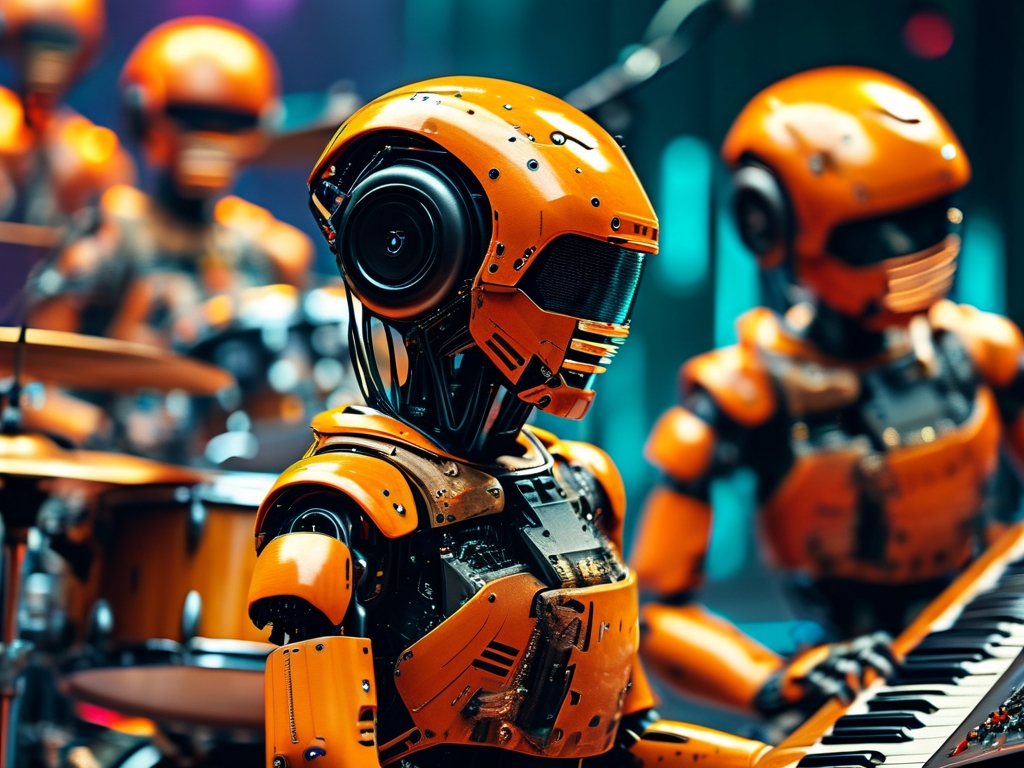From factory assembly lines to concert stages, robotic technology continues to redefine human capabilities. Among its most fascinating applications lies the emergence of autonomous musical ensembles – mechanical performers capable of playing instruments with precision that rivals human musicians. This article delves into the intricate systems powering these robotic bands, exploring how engineers bridge the gap between mechanical repetition and artistic expression.

At the core of any robotic band lies synchronization technology. Unlike industrial robots programmed for isolated tasks, musical robots must coordinate across multiple devices in real time. Take the Berlin-based Compressorhead trio as an example. Their drummer, Stickboy, employs 14 independently controlled actuators for limbs, each requiring millisecond-level timing adjustments based on input from optical sensors monitoring bandmates. This coordination relies on hybrid systems combining centralized MIDI sequencing with decentralized sensor networks, allowing individual units to adapt tempo variations caused by mechanical latency.
Mechanical design presents another critical challenge. Replicating human dexterity requires innovative engineering solutions. The robotic guitarist built by Shanghai's YouTeng Electronics demonstrates this complexity. Its "fingers" utilize shape-memory alloy springs that contract when heated, mimicking tendon movements. This design achieves 85% faster string-pressing response compared to servo-based alternatives, though it demands liquid cooling systems to manage thermal buildup during prolonged performances. Such biomechanical inspirations extend to breath-controlled instruments. Toyota's Partner Robots division developed a trumpet-playing android that modulates airflow through artificial lips made from silicone-embedded carbon fiber mesh, capable of producing vibrato through controlled pneumatic oscillations.
Artificial intelligence plays an increasingly vital role beyond physical automation. Machine learning algorithms now enable robotic bands to improvise within predefined musical parameters. Researchers at KTH Royal Institute of Technology recently demonstrated a system where robotic percussionists analyze audience biometric data (captured via thermal cameras) to adjust rhythm patterns. This emotional response engine uses convolutional neural networks to correlate body temperature fluctuations with musical preferences, creating what developers call "algorithmic empathy." While still experimental, such integrations suggest future directions where robotic performers adapt sets dynamically based on crowd reactions.
Energy management remains an underdiscussed technical hurdle. High-torque servo motors powering drum strikes or piano keystrokes can draw up to 2kW during crescendo passages. The Japanese band Z-Machines addresses this through regenerative braking systems in their guitarists' arms, converting deceleration energy during strumming motions into battery recharge. This innovation extends performance durations by 23% compared to conventional power systems, crucial for maintaining stage presence during live shows.
Despite these advancements, engineers continue grappling with the "uncanny valley" of musical expression. While robots can execute perfect technical renditions, listeners often perceive something lacking in emotional delivery. A 2023 study published in Frontiers in Robotics and AI revealed that audiences rate human-performed music as 37% more "authentic" even when robotic versions have superior technical accuracy. Some teams are tackling this through nuanced programming – the Belgian project ROBO-ART implements microtiming variations of ±12ms in note onsets and randomized velocity fluctuations within 5% of target values to simulate human imperfection.
Looking ahead, emerging technologies promise to push robotic bands into new creative territories. Quantum computing prototypes at MIT's Media Lab are experimenting with real-time harmonic generation, enabling robotic ensembles to compose polyphonic arrangements on the fly. Meanwhile, advancements in tactile feedback systems allow robotic musicians to "feel" their instruments – the Haile percussionist robot developed at Georgia Tech now adjusts strike force based on membrane tension detected through piezoelectric sensors in its mallets.
As these systems evolve, they raise intriguing questions about creativity and authorship. When a robotic band improvises a jazz solo using neural networks trained on Coltrane recordings, who claims artistic ownership? Legal scholars note that current copyright frameworks struggle to address machine-generated content, suggesting regulatory systems may need updating alongside the technology itself.
From technical marvels to philosophical dilemmas, robotic bands represent more than mechanical novelties. They serve as testing grounds for human-machine collaboration, pushing boundaries in fields from precision engineering to artificial creativity. As these mechanical maestros continue refining their craft, they challenge our very understanding of what it means to make music – and what role humanity plays in artistic creation.









